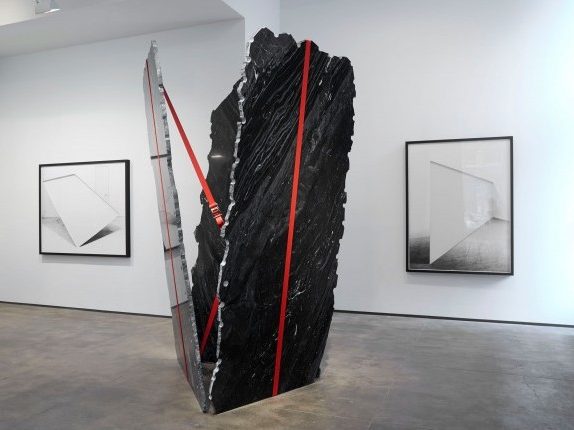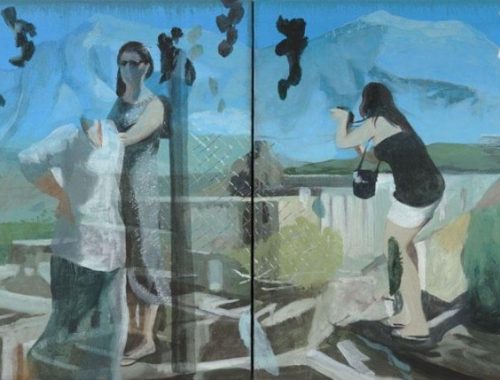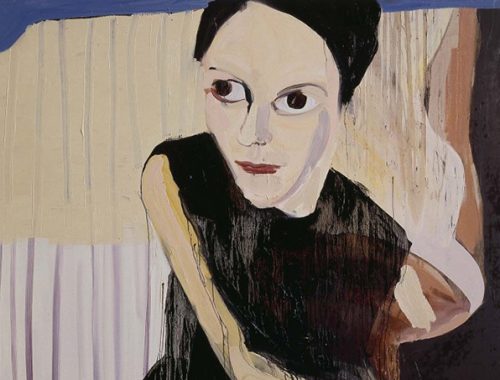
JOSE DAVILA
Jose Davila follows a career-long investigation into how the modernist movement continues to be interpreted, appropriated, and reinvented. His works address the tenets of architecture, art history, and physical geometry, whilst demonstrating the extensive range of the artist’s practice.
Well known are his mobiles in various colors and sizes suspended from the ceiling at different heights, creating an immersive kinetic installation. They manifest the artist’s longstanding fascination with Josef Albers’ renowned theories on the perception and interaction of color through a mathematically determined format of squares. Dávila advances Albers inquiry by establishing the square as a three-dimensional object, existing in a dynamic state of motion.
In addition he has worked on a series of large-scale photographic cut-outs based on Roy Lichtenstein’s Femme d’Alger. Reminiscent of Picasso’s series on the same theme, which included fifteen oil paintings and several hundred sketches, Davila’s cut-outs come in a thirteen pieces variation. Beginning with a complete image, key elements of the image are progressively removed until the work is reduced to its essential structural elements, inviting the viewer to pause and consider the importance of both what is no longer present and what remains.
Key to his carreer is an impressive interplay of fragility, strenght, balance and equilibrium that is best represented in his sculptural oeuvre. His glass and stone installations form a series that defies gravity juxtaposing materials in a literal and metaphorical moment of tension. Reference is taken to the minimalist notion of “sculpture as place,” as conceived of by artists such as Carl Andre and Richard Long.
Jose Dávila was born in Guadalajara, Mexico in 1974. For over a decade, Dávila’s practice has explored spatial occupation and the transitory nature of physical structures. Drawing on his formal training as an architect, Dávila creates sculptural installations and photographic works that simultaneously emulate, critique, and pay homage to 20th century avant-garde art and architecture. Davila is informed by artists and architects from Luis Barragán and Mathias Goeritz to Donald Judd.

FEATURED - MARC QUINN "FROZEN WAVE"

Carmen Neely
You May Also Like

SOVIET MODERNISM _ NOSTALGIA AND VISION
30/10/2020
MARC DESGRANDCHAMPS
29/01/2023